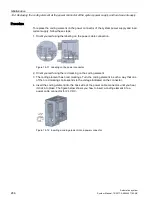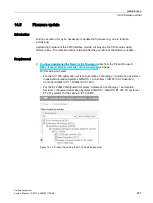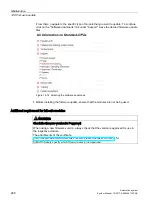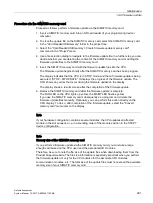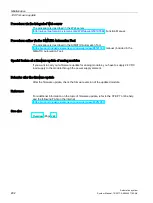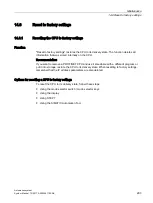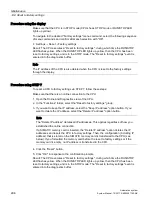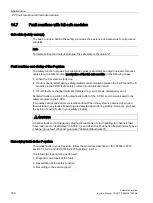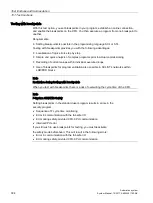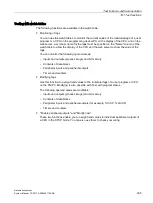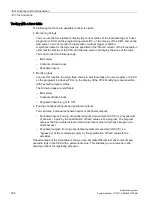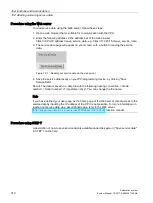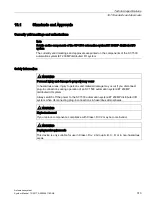
Maintenance
14.7 Fault reactions with fail-safe modules
Automation system
300
System Manual, 12/2017, A5E03461182-AE
14.7
Fault reactions with fail-safe modules
Safe state (safety concept)
The basic principle behind the safety concept is the existence of a safe state for all process
variables.
Note
For fail-safe input and output modules, this safe state is the value "0".
Fault reactions and startup of the F-system
The safety function requires that substitute values (safe state) be output instead of process
values for a fail-safe module (passivation of the fail-safe module) in the following cases:
●
When the F-system is started up
●
If errors are detected during safety-related communication between the F-CPU and the F-
module via the PROFIsafe safety protocol (communication error)
●
If F-I/O faults or channel faults are detected (e.g., wire break, discrepancy error)
Detected faults are written to the diagnostic buffer of the F-CPU and communicated to the
safety program in the F-CPU.
F-modules cannot save errors as retentive data. When the system is powered down and
then restarted, any faults still existing are detected again during startup. However, you have
the option of saving faults in your safety program.
WARNING
Channel faults do not trigger any diagnostic reactions or error handling for channels that
have been set to "deactivated" in STEP 7, even when this channel is affected indirectly by a
channel group fault (Channel parameter "activated/deactivated").
Remedying faults in the F-system
To remedy faults in your F-system, follow the procedure described in IEC 61508-1:2010
section 7.15.2.4 and IEC 61508-2:2010 section 7.6.2.1 e.
The following steps must be performed:
1.
Diagnostic and repair of the fault
2.
Revalidation of the safety function
3.
Recording in the service report
Summary of Contents for Simatic S7-1500/ET 200MP
Page 1: ......

